
This is version 1 of the parrot Rosalinda that was manually puppeteered. I made the parrot for the Varmland Theatre’s production of “Pippi on the Seven Seas” on Mariebergsskogen stage in Karlstad summer of 2014.
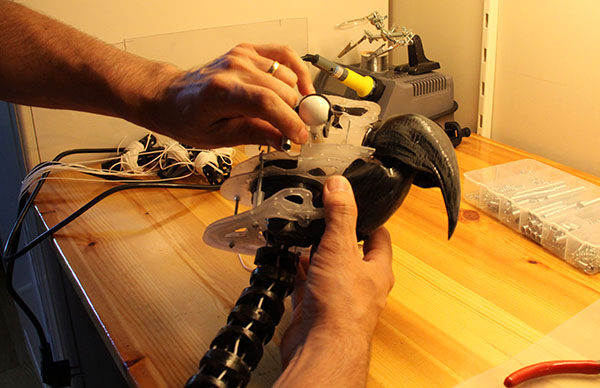
I printed the vertebral column in my MakerBot Replicator 3D printer. Each vertebra was printed individually and threaded on a steel spring. The steel spring made the the vertebraes keep together while the vertebral column was flexible in all directions. Then four lines was threaded through all the vertebrae. The lines were operated in pairs so that when the rear line was pulled then the front line line was released with the result that Rosalinda was looking up.
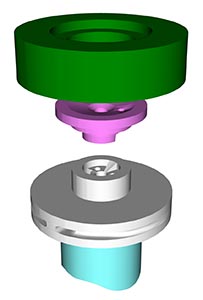
The rotation of the head was solved with the help of fishing lines in a 3D-printed “atlas vertebra” ..
The beak and the eye including eyelid was also written out as a 3D print. These were also controlled using fishing lines.
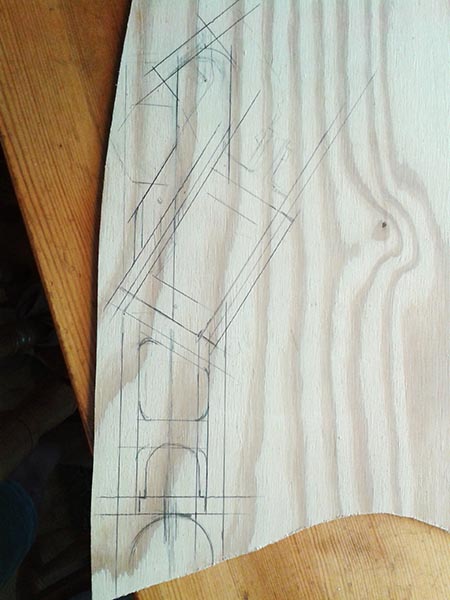
The body of rosalinda was made of plywood glued into a structure where the wings were hinged on. The vertebral columns lowermost vertebra was designed to fit into the plywood construction.
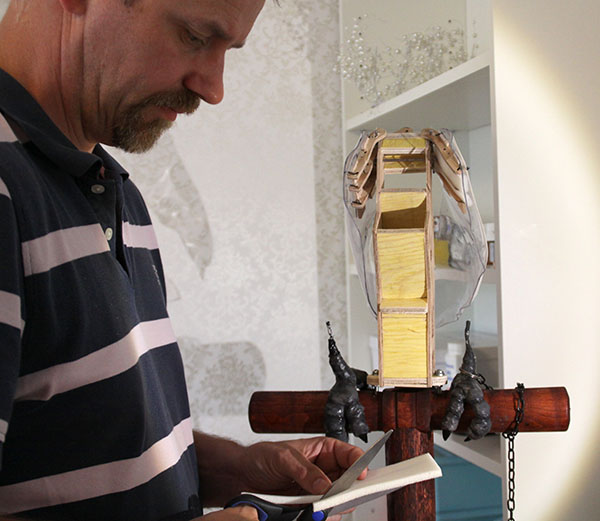
The feet were designed by my son Alexander. He sculpted them with a heat gun and self-vulcanizing tape! The stick was lathed out of wood and drilled so that the steering lines could be led into her body from underneath. The wings of acrylic glass was molded with a hot air gun.
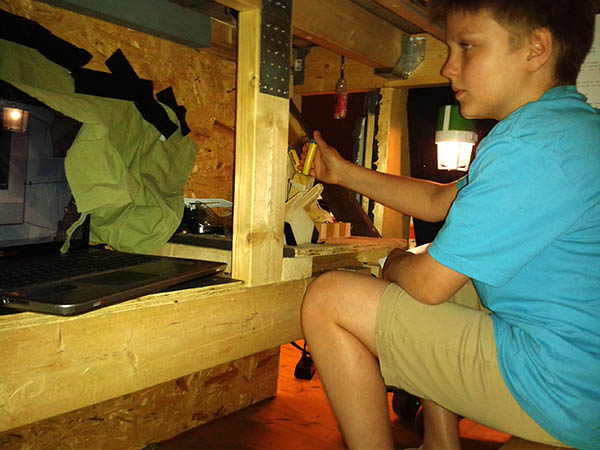
Alexander sat under the castle and puppeteered Rosalinda by pulling the levers. On the laptop, he could see a live view of the actors’ actions above his head. Alex got crowded with Pippi and others who crawled up through the hatch in the castle floor and a smoke machine that pushed theater smoke.
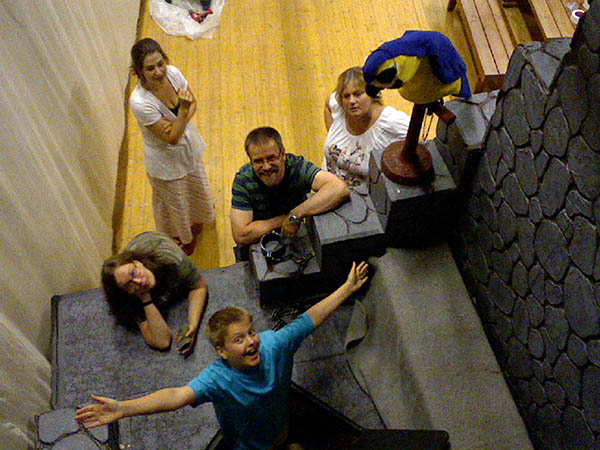
The webcam was positioned at the top of the castle and pointing downwards.
After the last performance, she was dismantled for later re-emerge in a more advanced version, Rosalinda version 2.
Lessons learnt:
To transfer movements with the help of lines was not a good solution. Although the length of the lines were only a few meters, the friction in the pipes caused the ropes to stretch. This led to “lag” and restriction of the parrot movements.
Leave a Reply